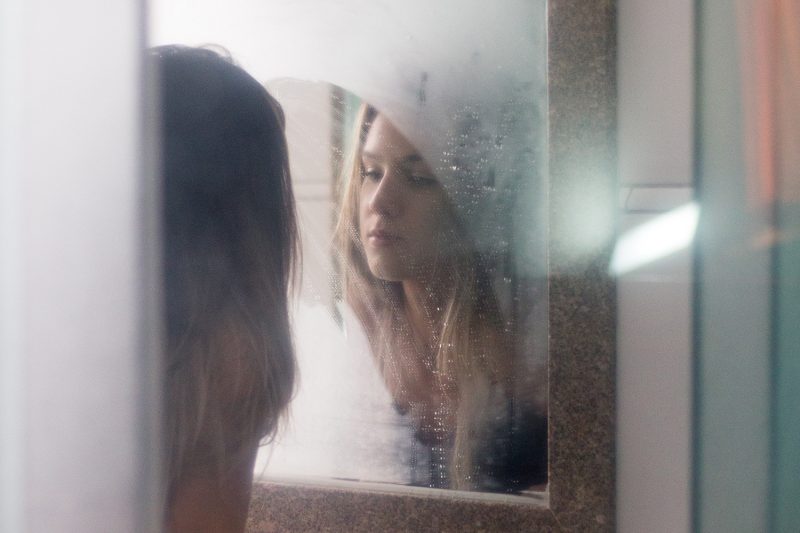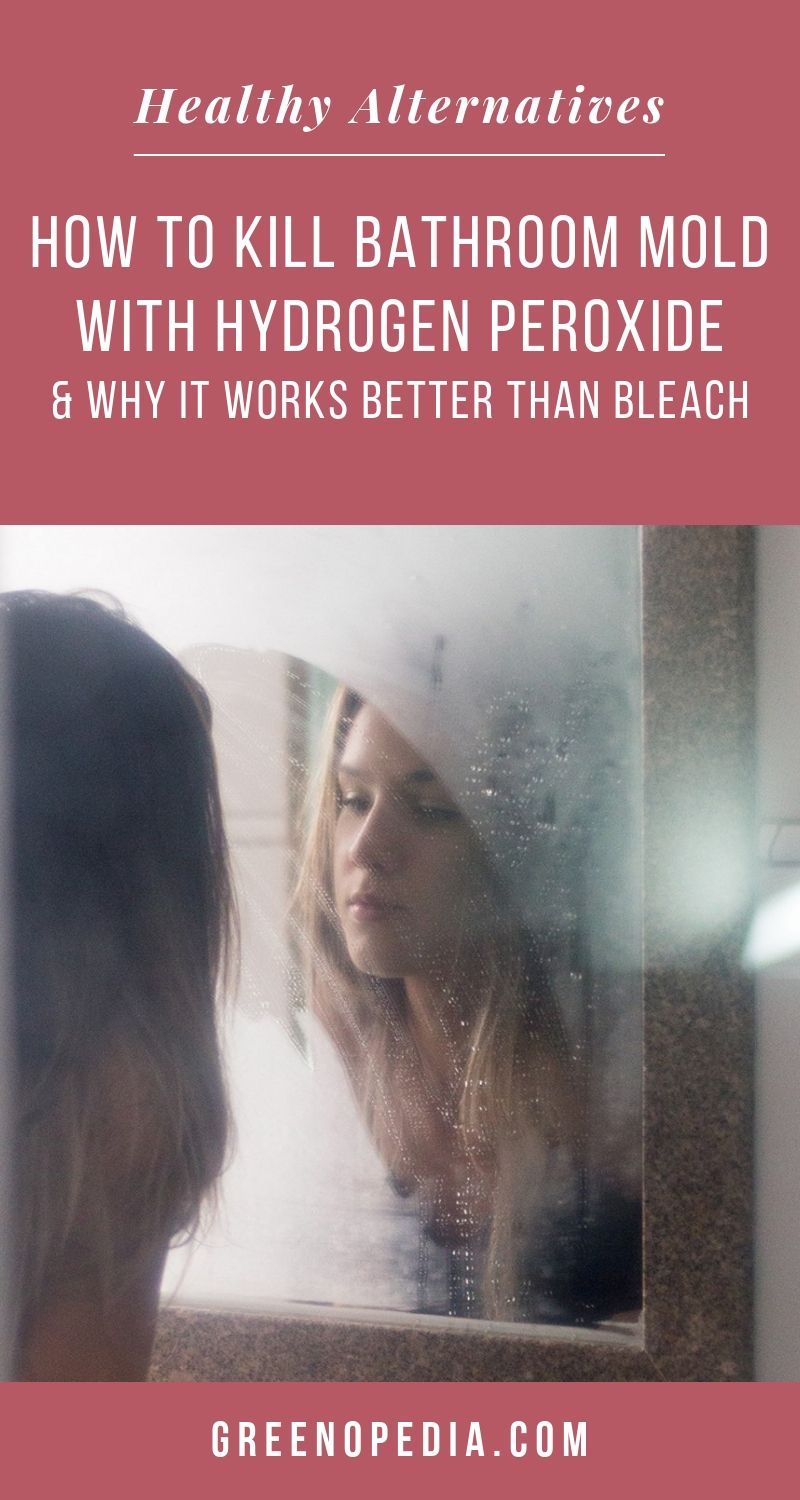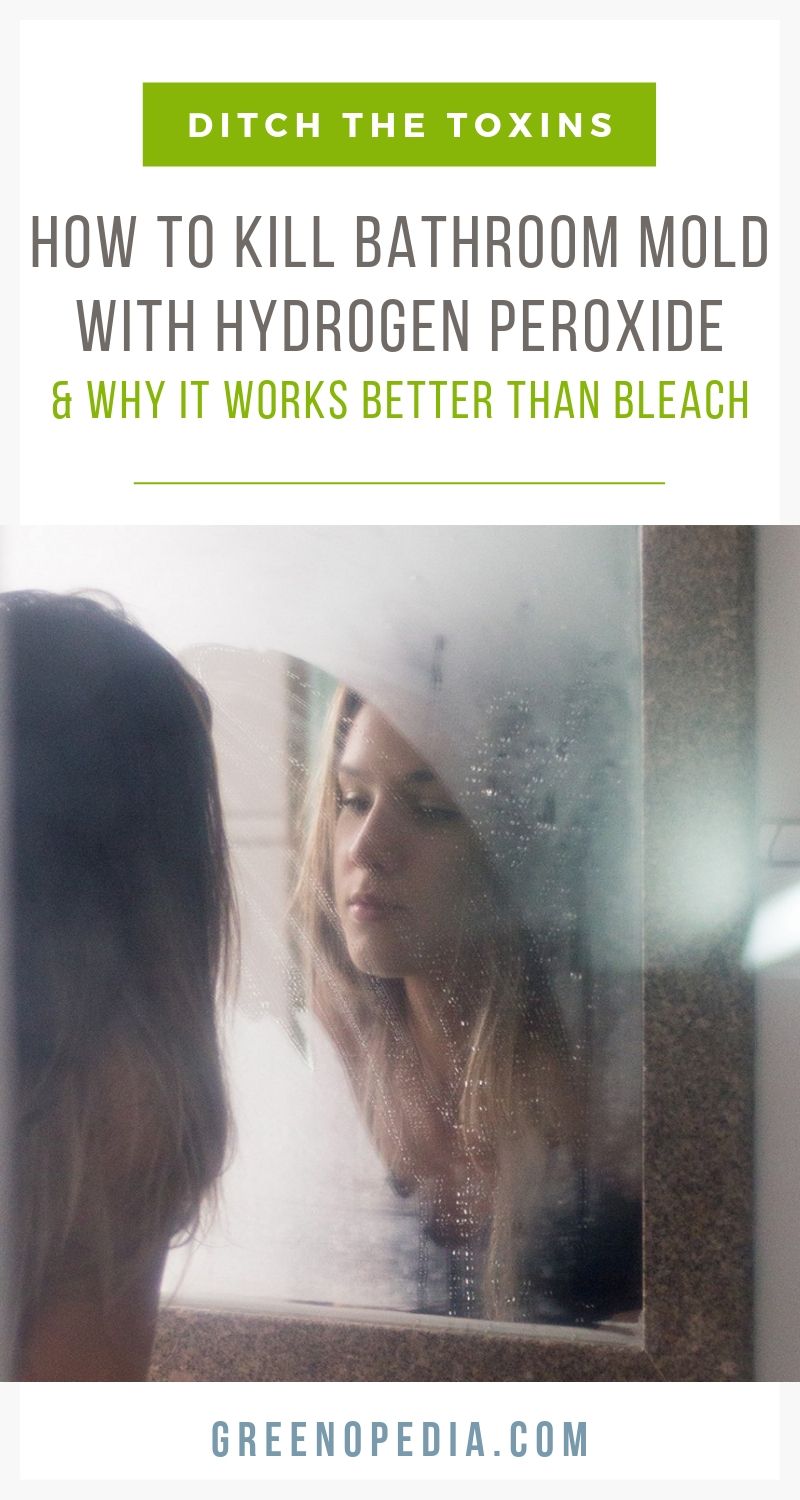If you’ve got a stale, musty odor in your basement, you may have a small water leak. Coupled with poor ventilation, the still water can quickly lead to mold build-up. These pesky mold spores also love hanging out on the ceiling and walls of poorly ventilated bathrooms.
Not only does it create some pretty ugly — and often stinky — stains, but mold can also be quite dangerous. Breathing it in or rubbing against it can cause rashes, nausea, allergies, asthma attacks, and other serious health issues.
Mold is fairly easy to kill on smooth surfaces such as tile. But it can be more difficult when it hides within the porous surfaces of wood, carpet, and drywall. So while bleach is highly effective at killing mold spores. (the active ingredient in most mold sprays), it cannot penetrate porous surfaces. Bleach also produces toxic fumes that can be as harmful to inhale as the mold itself.
So how can you kill mold effectively without fumes and on porous surfaces? Hydrogen peroxide.
The fizz of hydrogen peroxide kills mold
The effervescent nature of hydrogen peroxide makes it more effective than chlorine bleach at reaching and killing mold on porous surfaces. It is also inexpensive and readily available at grocery stores and pharmacies.
Then, once you’ve tackled the mold stains, you can absorb any lingering odors naturally with salt water, vinegar, activated charcoal, or odor-neutralizing minerals. And to prevent musty odors from building up again in the future, be sure to fix any leaks and consider investing in a dehumidifier to keep the room dry.
Here’s how to tackle the mold.
Learn how to:
- Remove the mold contamination
- Clean and disinfect wet items
- Remove stubborn mold stains
- Absorb lingering odors
- Keep the room odor-free
Remove the mold contamination
If your home is severely infested, it’s best to call a mold remediation professional who can properly test your home and recommend solutions. You can also test for mold yourself with an at-home kit. Either way, be sure to also inspect any air ducts that have come into contact with the mold.
To remediate mold issues:
- Start by opening doors and windows to allow fresh air inside the room. Do not use fans if the mold has already begun to grow, as they can spread the spores to other parts of the house.
- Put on a pair of latex gloves, protective mask, and goggles.
- Remove all wet items from the house such as carpeting, rugs, toys, furniture, and ceiling tiles.
When mold accumulates behind unfinished drywall, inside unpainted wood, underneath carpets or other places that spray solutions simply cannot reach, the material will likely need to be replaced.
- Remove wet baseboards and drywall up to 12-inches above the water or mold stains.
- And remove and discard wet insulation, so that you can also check inside the wall for mold. (Rigid insulation can be disinfected and reinstalled.)
Clean and disinfect wet items
Be sure to put on a pair of latex gloves and goggles for protection before beginning your cleanup.
- Disinfect non-porous materials: Wash glass, plastic and metal surfaces with a solution of equal parts hot water and 3% hydrogen peroxide** (found in supermarkets & drugstores). Scrub the solution into rough surfaces, such as concrete, with a stiff brush. Let the solution sit for 15 minutes and wipe dry.
- Disinfect porous materials: Scrub porous surfaces such as wood and fabric with just the 3% hydrogen peroxide** (no additional water). Let the solution sit for 15 minutes and rinse clean. Leave non-porous materials to dry over several days and monitor for mold growth and odors. If mold develops, discard the item.
**Hydrogen peroxide is considered an “oxygen bleach”. it is free from chlorine, but it can still discolor fabrics and other materials. As such, you may want to have a specialist handle items of sentimental or monetary value
Remove stubborn mold stains
Spray surface mold with 3% hydrogen peroxide and let it sit for 15 minutes, before wiping dry. Repeat as necessary, or scrub extra-stubborn stains with baking soda.
Absorb lingering odors
Once you’ve dealt with moldy items, place bowls of vinegar, lemon water, and/or saltwater around the room to absorb lingering odors. Let the bowls sit a few days until the smell is gone.
Since the salt, water, lemon slices, and vinegar will absorb the odor-causing bacteria, they should not be used in food or drink afterward. Instead, rinse the water and vinegar down the sink and discard lemons in the trash or compost.
If the odor in your home is extra strong, you may require an extra-strong solution that is still non-toxic. A company called EnviroKlenz has created an advanced mineral technology that completely neutralizes malodors that other solutions cannot. And they cover the gamut from HEPA air purifiers to odor neutralizing granules for the carpet and laundry.
EnviroKlenz Mineral Technology
Alternative to Enviroklenz
As powerful as Enviroklenz is, there is a downside in that the Everyday Odor Eliminator is a white creamy liquid and can be quite messy to clean up. A clean alternative for neutralizing odors from surfaces is actually a mini-appliance called Force of Nature that uses water + vinegar + electrolysis to create a powerful disinfectant.
This highly effective sanitizer kills 99% of germs and has been approved by the EPA for use against SARS-CoV-2, which is the virus that causes COVID-19. And as a multipurpose cleaner, it replaces your home sanitizers, deodorizers, and disinfectants — and even your glass cleaner.
The original Starter Kit has 5 “activator capsules”, which creates 5 bottles of cleaner and you can stock up on the 25-packs of the capsules thereafter. Or you can get one of the newer starter kits that already come with either 25 capsules or 50 capsules if you don’t want to reorder for a while.
Toxin-Free Disinfectant & Deodorizer by Force of Nature
Keep the room odor-free
Once the mold is gone, you’ll want to keep the room dry with a dehumidifier and/or proper ventilation to prevent the mold from returning. You can also keep sachets of activated charcoal around the room. The odor-causing bacteria will be absorbed into the porous charcoal for up to three months. But you don’t have to toss it after that! Once it begins to lose its odor-absorbing abilities, simply place it in the sun for a few hours (up to a few days) to recharge.
FREE DOWNLOAD
Natural Living Guide
Find practical tips & natural alternatives to the everyday chemicals that invade our lives.













